
Blame ABC Family for playing Sorcerer’s Stone on repeat throughout the 2000s, but for many Millennials (and now, their children) a chill in the air demands curling up on the couch for a Harry Potter rewatch.
While millions of viewers used to take comfort in visits to Hogwarts, these days, engaging with the series can be complicated. Harry Potter taught so many about the importance of fighting against prejudice, which makes creator J.K. Rowling’s controversial comments on gender identity all the more disappointing. Even some of her most ardent fans accused her of transphobia, at which point Rowling doubled down on her exclusionary brand of feminism. Now, many fans strive to find a way to derive value from the material while rejecting its creator’s views.
Even Harry Potter star Daniel Radcliffe, who spoke out against Rowling’s anti-trans tweets, has wrestled with whether the story is irredeemably tarnished. In an open letter for the Trevor Project, he wrote, “If these books taught you that love is the strongest force in the universe … if they taught you that strength is found in diversity, and that dogmatic ideas of pureness lead to the oppression of vulnerable groups; if you believe that a particular character is trans, nonbinary, or gender fluid, or that they are gay or bisexual … then that is between you and the book that you read, and it is sacred. And in my opinion nobody can touch that.” For many, the annual rewatch remains a tradition, albeit a fraught one.
And so, we find ourselves reassessing these adaptations, all eight of which are streaming on both Peacock and HBO Max as of Oct. 15. Typically, fans agree on favorites in a film series. Most Star Wars diehards will tell you Empire Strikes Back is great, and Phantom Menace sucks; Indiana Jones fans will assure you that none of the sequels lived up to Raiders of the Lost Ark; and anyone who argues Dark Knight isn’t the best of the Batman movies is just trying to be contrarian. Rational minds can certainly disagree. But for the most part, every franchise has good movies and bad movies, and it’s easy to divide films into those two buckets.
The Harry Potter films prove more difficult to rank. True, the awful new Fantastic Beasts movies will easily land at the bottom of any Potter fan’s list (spoiler alert). But the older films are surprisingly solid. Look up fan polls and critics’ rankings, and you’ll find there’s no consensus view on how the original eight films compare. Some fans prefer the glee of those first movies, while others trend towards the darker entries later in the franchise. Movie fans may love the cinematography of Half-Blood Prince, while book loyalists take umbrage with director David Yates’ adaptation choices. Some critics preferred the quiet, contemplative moments spent in the forest during Deathly Hallows, Part 1, while others favor the action-packed battles of Deathly Hallows, Part 2.
Many fans’ views have also evolved with the passage of time. It’s easier to assess the series as a whole now that the movies have become a true cultural touchstone. And Rowling’s commentary, political views and additions to the canon will no doubt influence any critic’s perception of the films, for better or worse. Here is how we rank the Harry Potter films—at least for now.
10. Fantastic Beasts: The Crimes of Grindelwald

Fantastic Beasts: The Crimes of Grindelwald embodies everything wrong with the continued expansion of the Harry Potter universe. The Harry Potter prequel could have explored a whole new corner of the wondrous world Rowling once built. Instead Grindelwald plays like a cash grab. Rowling’s script tries to connect just about every new character it introduces in some forced, hackneyed and occasionally racist way to the characters we know and love from the original Harry Potter films. But the revelation that one character will eventually become a snake or that another is a long-lost relative of Albus Dumbledore only muddles the canon.
Meanwhile, the one person the audience does recognize and care about—young Dumbledore, played enchantingly by Jude Law—gets the short shrift. Despite insisting in interviews that Dumbledore and the Hitler-esque wizard Gellert Grindelwald were romantically involved as teens, Rowling has never actually written that romance into any of her books or screenplays. Crimes of Grindelwald centers on a proxy battle between Dumbledore and Grindelwald but only vaguely references that the two might have had a romantic relationship. Rowling’s refusal to acknowledge that these two men are queer and have a complicated history is maddening. It zaps the film of any real tension between its main hero and villain. Meanwhile, offscreen, Rowling’s insistence that Grindelwald actor Johnny Depp remain with the franchise after his ex-wife Amber Heard accused Depp of assault, was off-putting to say the least. Since then, a high court judge found that Johnny Depp was guilty of assaulting Heard, and Warner Bros. finally parted ways with the actor. Still, the ill-fated series will soldier on.
Read More: Just Cancel the Fantastic Beasts Franchise Already
Stream on Amazon.
9. Fantastic Beasts and Where to Find Them
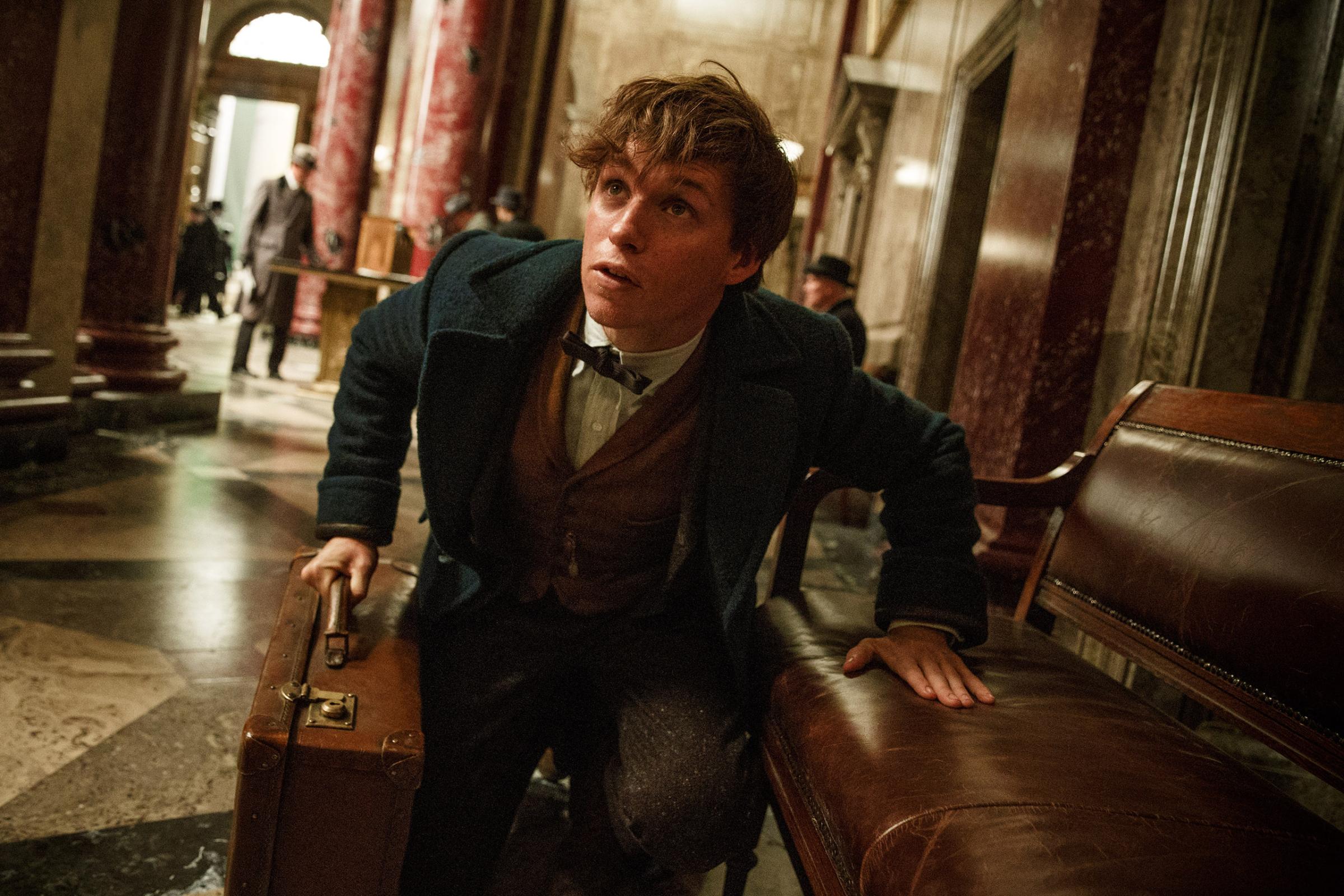
Fantastic Beasts and Where to Find Them was Rowling’s first screenplay, and it shows. If you squint, there’s a good movie within Fantastic Beasts about the rise of fascism in the Wizarding World in the 1920s. Unfortunately, studios have to sell stuffed animals. So Fantastic Beasts wraps its dark Grindelwald origin story inside a movie about a dorky magical creature enthusiast (Eddie Redmayne) scurrying across 1920s New York City trying to round up adorable critters. The platypus-esque Nifflers are, undeniably, cute, and the other CGI creatures are quite impressive. But the bipolar movie never quite ties the two plots together.
There’s hope that Rowling could rectify this issue in future films. One of Rowling’s best talents is actually intricate plotting—the early Harry Potter books and their adaptations would often weave plots together to make a more cohesive whole. The author would patiently plant the seeds of a plot point in an early novel that would then bloom in the later books to stunning effect. Perhaps it’s unfair to judge Fantastic Beasts on just the first two entries (the studio intends to produce five films). But so far the franchise has failed to cast a spell over its audience.
Stream on Amazon.
8. Harry Potter and the Chamber of Secrets
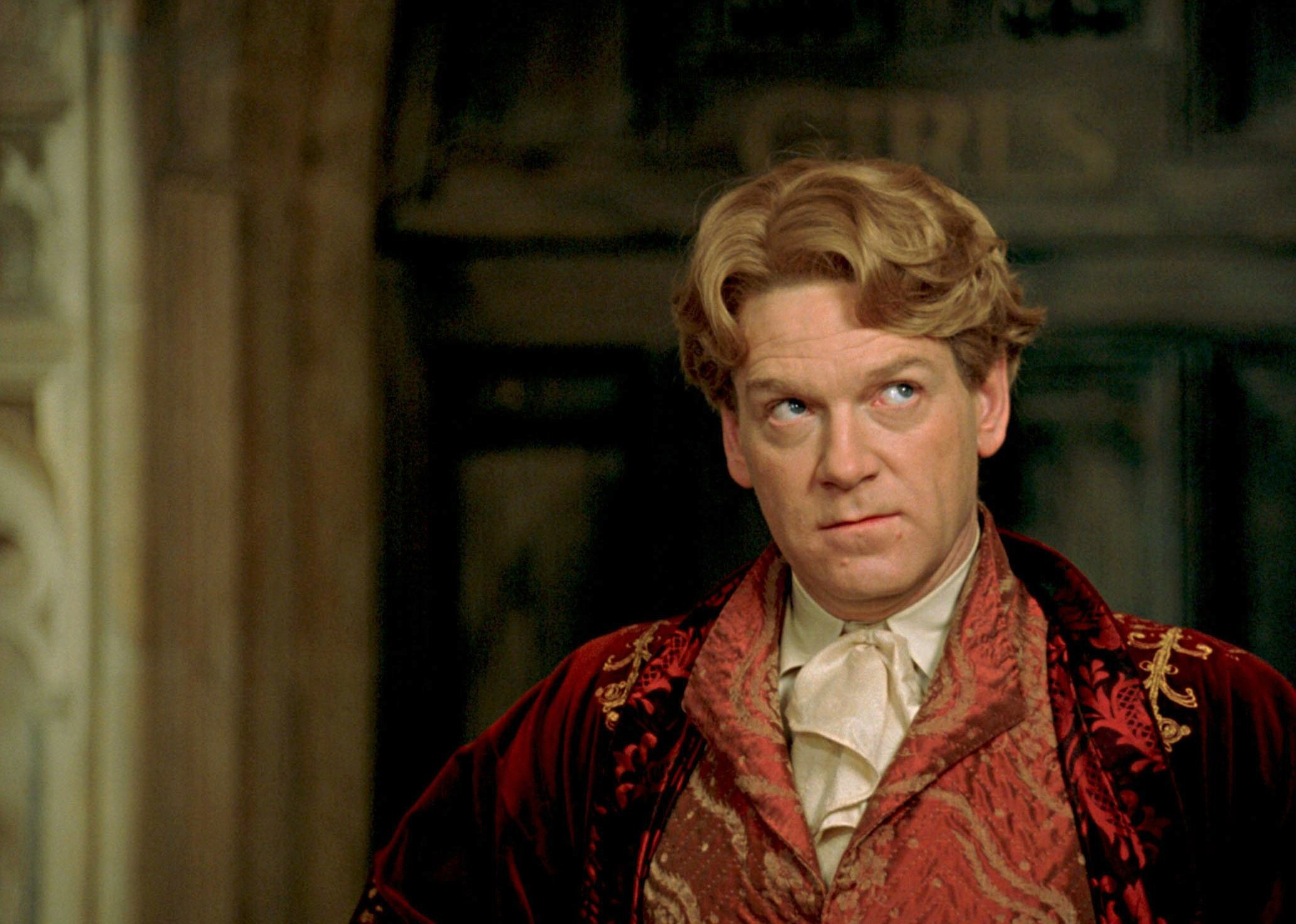
Let me be clear: There is a giant chasm between Chamber of Secrets and the Fantastic Beast films. While Chamber may rank low on this list, it’s still a delightful time at Hogwarts. Hermione turns into a cat person! Harry and Ron fly in a car! Kenneth Branagh pokes fun at his own public persona as a narcissist! Sure, child actors Daniel Radcliffe, Emma Watson and Rupert Grint haven’t quite yet mastered their acting skills. But they’re pretty cute.
And yet, the movie clocks in at 160 minutes, far too long for one of the shorter and, let’s be honest, lesser Harry Potter books. The pace of the film is, at times, agonizingly slow. Like Sorcerer’s Stone, Chris Columbus’ Chamber is slavishly dedicated to the book—except for the bizarre moment when Lucius Malfoy attempts to use the killing curse “avada kedavra” on Harry in the middle of a Hogwarts hallway. (Apparently Lucius Malfoy actor Jason Isaacs improvised the line and had forgotten the actual meaning of the curse.) In transcribing the work rather than adapting it, Columbus undercuts a sense of discovery that is essential to the Potter stories.
Stream on Amazon.
7. Harry Potter and the Sorcerer’s Stone
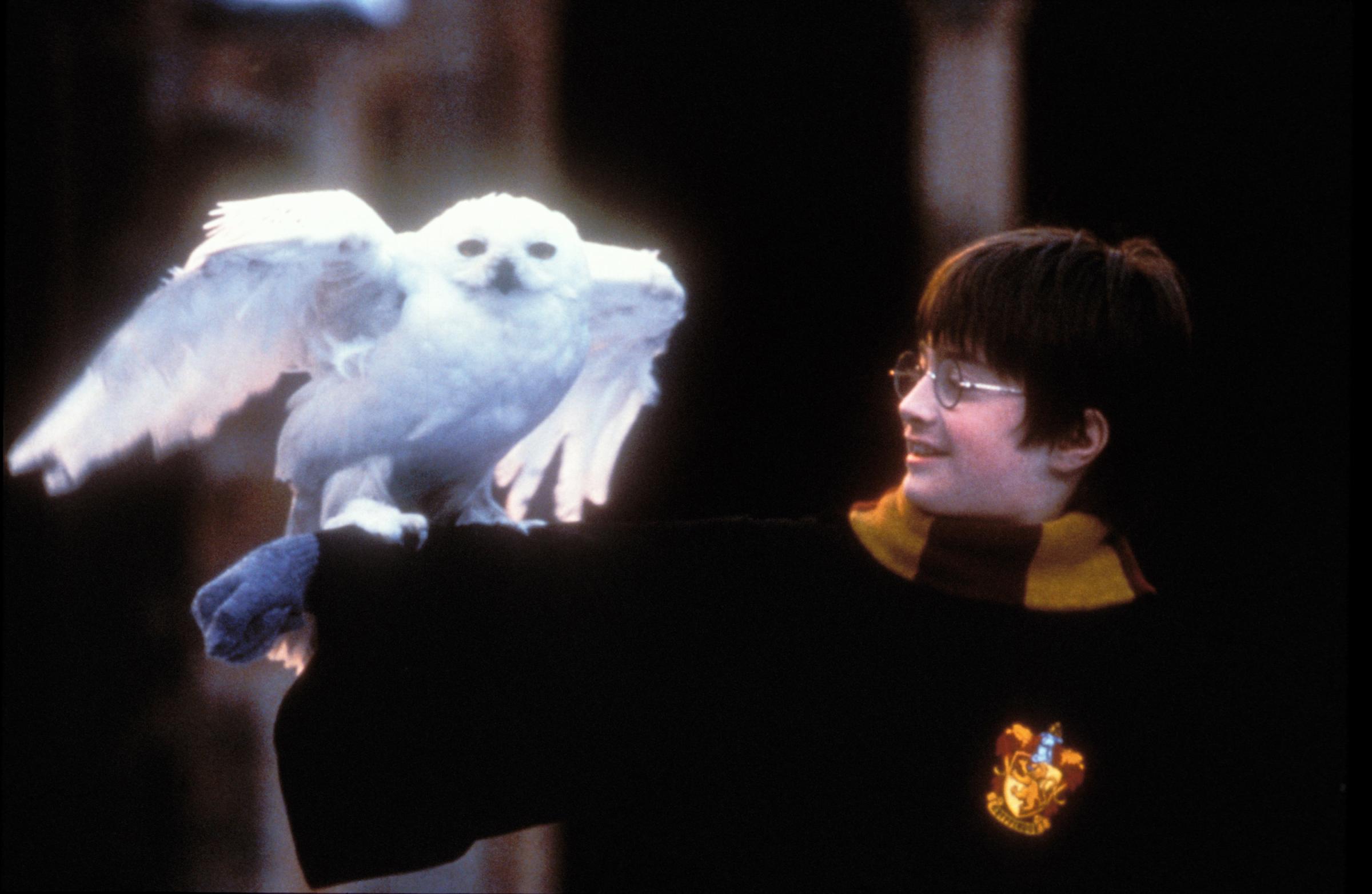
Though it’s probably the truest book-to-movie adaptation, the Sorcerer’s Stone, with its Matilda-esque tone, doesn’t live up to the power of the rest of the series. In retrospect, the CGI is clunky, and the one-liners are too cute by half. Still, Christopher Columbus was also able to capture, well, the magic of that first introduction into Hogwarts. As soon as those owls begin to invade the Dursley’s neighborhood, the Wizarding World suddenly seemed more accessible than it ever did on the page.
At the time of its premiere, Sorcerer’s success was no guarantee. Throughout the 2000s, fantasy adaptations like The Golden Compass and Eragon flopped at the box office. But Columbus’ movies managed to do right by the books: Hogwarts awed; quidditch looked exactly as fans had imagined it; and the school uniforms became instantly iconic. Columbus’ team also made some fantastic casting decisions that would pay off years later, like recruiting Alan Rickman to play Severus Snape and Maggie Smith to tackle Minerva McGonagall. And they found a trio of child actors who would, over the next decade, hold their own in scenes with some of England’s most talented thespians.
Stream on Amazon.
6. Harry Potter and the Deathly Hallows, Part 1
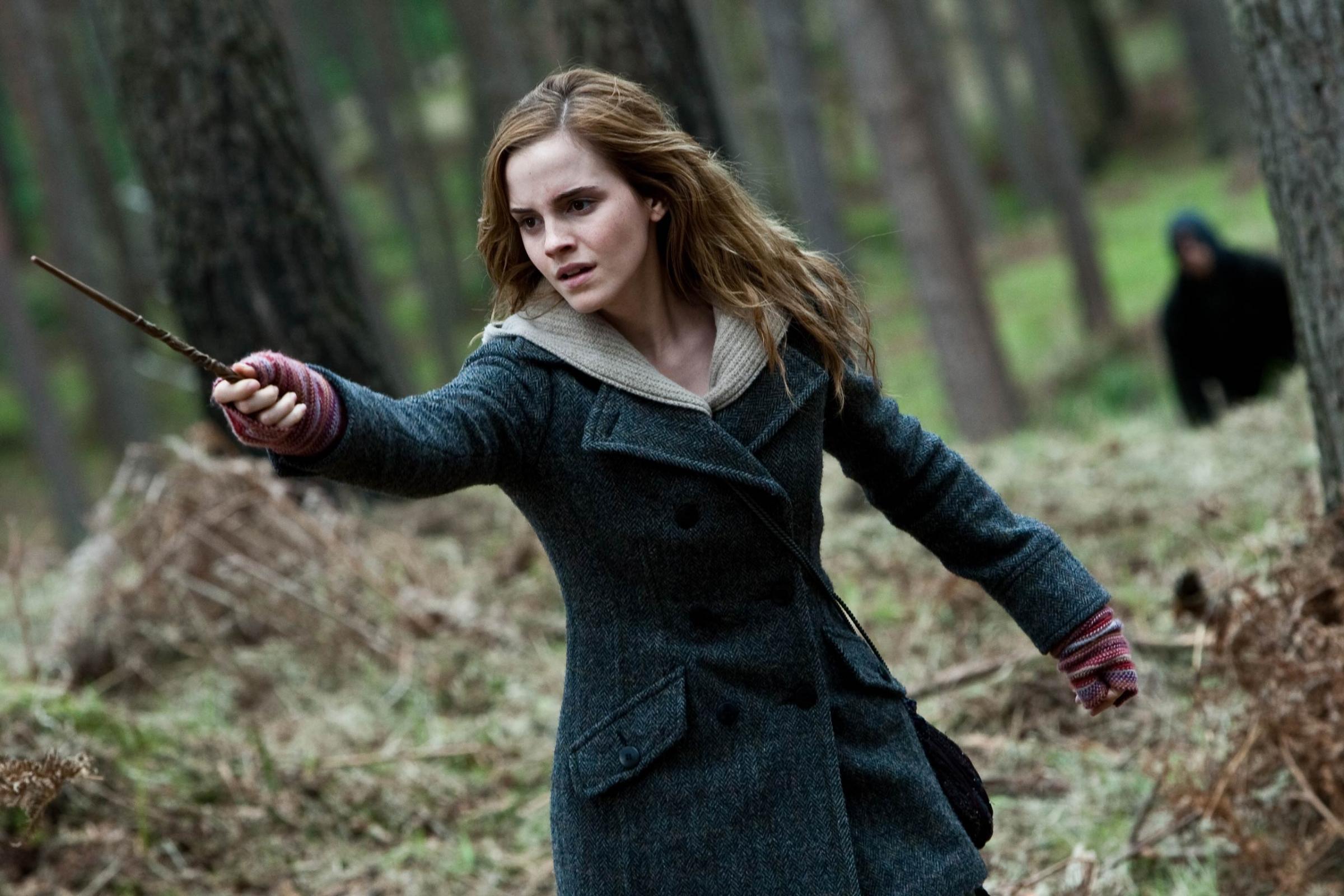
Ah, Deathly Hallows, Part 1: perhaps the most divisive movie in the franchise. How do you feel about watching three teenagers bicker in the forest for a few hours? What if two of those characters take a dance break seemingly designed to enrage or tantalize fans, depending on which characters you ship?
There are things to adore in this movie, like the breathtaking animation of the “Tale of the Three Brothers.” And director David Yates does beautifully capture the frustrations of Harry’s Horcrux mission. The scenes in which Harry, Ron and Hermione aimlessly walk through empty fields and abandoned parking lots, a fuzzy voice on the radio rattling off the names of the dead as they wander capture the book perfectly.
But Part 1 spends very little time during those quiet conversations exploring who Dumbledore was and his connection to the Deathly Hallows, three magical tools that are crucial to the final fight in the following film. That may seem like nerdy nitpicking. But good genre fiction distinguishes itself from bad genre fiction by imbuing its McGuffins with actual meaning. If Harry doesn’t have a personal connection to the Elderwand through Dumbledore, then he’s just chasing some meaningless shiny object. Such scenes also could have given the audience more time with Ralph Fiennes as Voldemort, who shines in Part 2 as one of the greatest onscreen villains of all time.
Stream on Amazon.
5. Harry Potter and the Half-Blood Prince
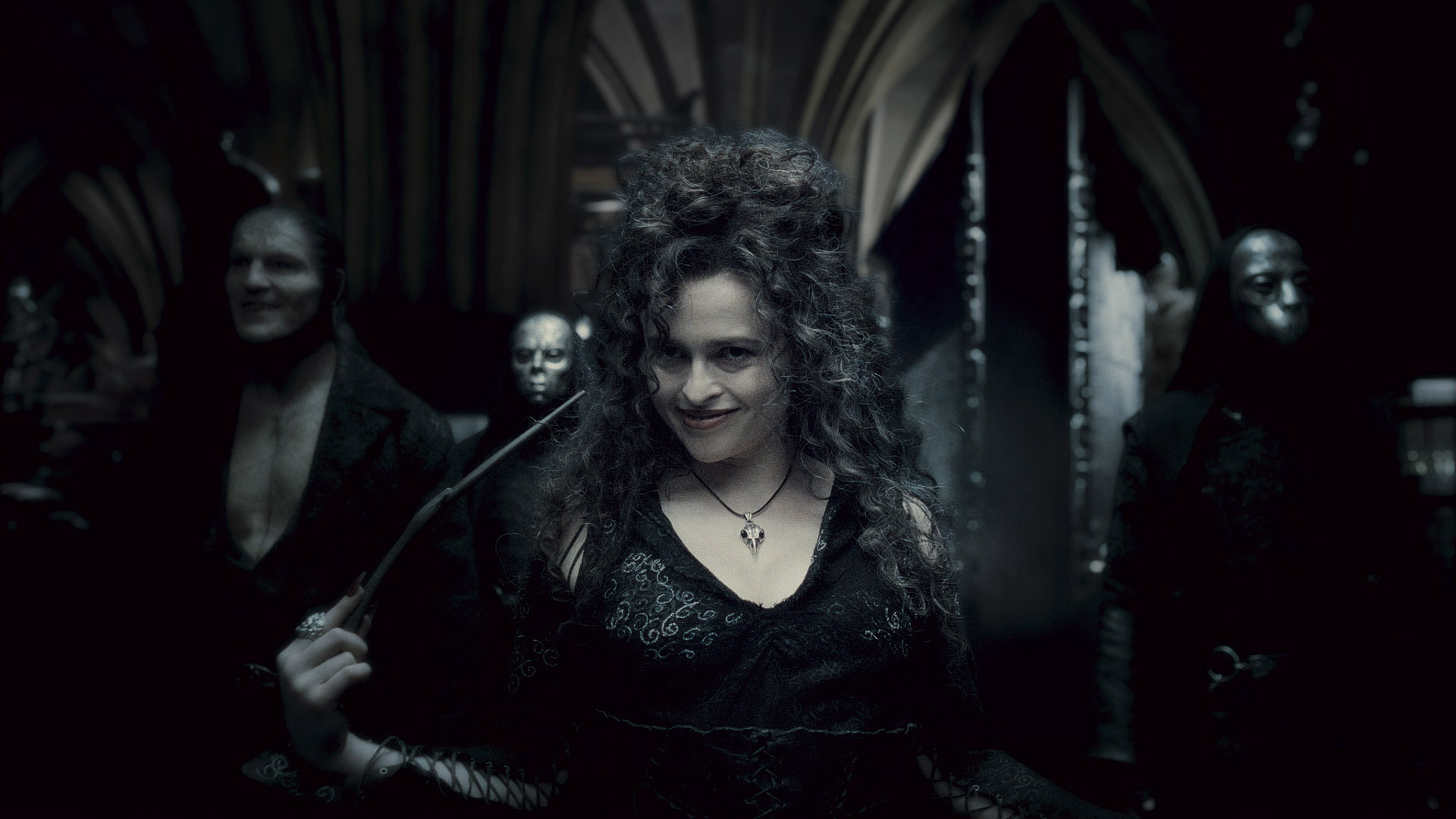
Book fans tend to criticize the Half-Blood Prince adaptation because it leaves out crucial details about Tom Riddle (a.k.a. Voldemort) and why he decides to create the Horcruxes. As a result, the burden falls upon the already plot-heavy sequels to communicate the importance of these magical objects. It’s frustrating to watch Harry hunt down and destroy parts of Tom Riddle’s soul like he’s stumbling across random Bosses in a video game when Rowling gave each Horcrux a meaningful backstory in the books that rendered Voldemort a more complex character.
More than any other movie, Half-Blood Prince seems to miss the point of the books. Take the pivotal scene in which Snape kills Dumbledore. Although Harry’s single defining trait as a character is his willingness to rush rashly and headlong into danger for his loved ones, the movie-version of Harry stands by and does nothing while Dumbledore is murdered. In the book, Dumbledore has put Harry under a spell that prevents him from moving to interfere with Snape—a detail skipped over in the movie. Exacerbating matters is Michael Gambon’s performance as Dumbledore, which comes across as cold and commanding rather than gentle and eccentric.
Still, the cinematography in Half-Blood Prince is fantastic. Yates signals the transition to a grimmer story by rendering Hogwarts as darker and more empty than in previous films. It’s arguably the most aesthetically beautiful of all the movies. And many critics have praised the slower pace of the film, which spends less time on Quidditch and magical battles and more time on character relationships than its predecessors.
Stream on Amazon.
4. Harry Potter and the Deathly Hallows, Part 2
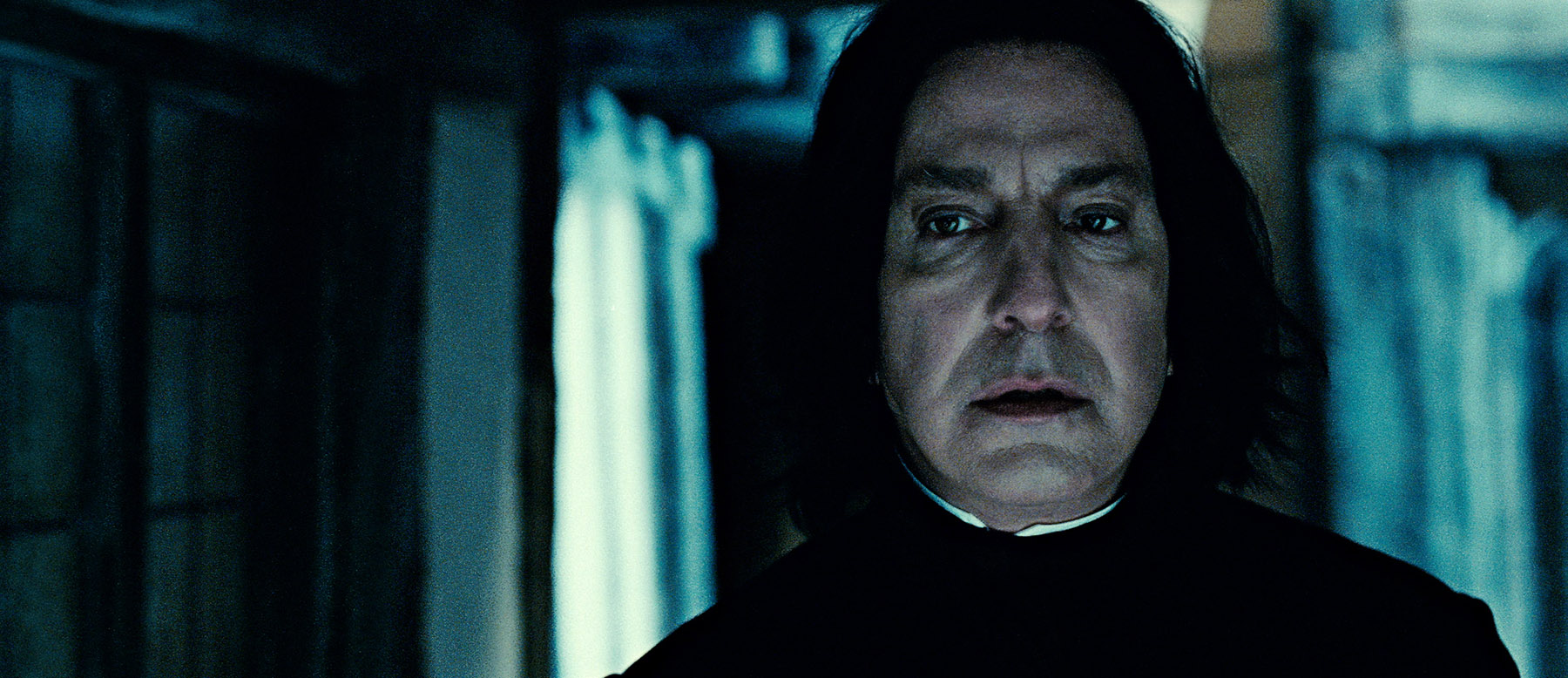
Deathly Hallows, Part 2 is all action. As soon as the movie begins, Harry, Ron and Hermione are breaking into Gringotts, riding on the back of a dragon and, finally, battling Voldemort. That’s not always a good thing: The audience is barely given a moment to breathe and consider the consequences of this final battle. Book readers will certainly miss some of the quieter moments of reflection, particularly between Harry and Dumbledore at King’s Cross Station after Harry dies.
But the film is able to pull off several crucial moments of character development amid the chaos, including Neville’s evolution into a bold hero, Ron and Hermione’s first kiss and Molly Weasley’s epic defeat of Bellatrix LeStrange. To that end, the film plays like a somber but satisfying reunion. Deathly Hallows Part 1, and even to some extent Half-Blood Prince, are films about loneliness and isolation. Some of the most beloved characters in the Harry Potter series are missing entirely from those movies. When Harry, Ron and Hermione return to Hogwarts, we get to enjoy Rowling’s wide array of Dickensian characters once again.
And the movie more than makes up for any elided conversations with the emotional punch of Alan Rickman’s performance as Snape. The series’ finale hinges on Rickman’s ability to sell the audience on the idea that his love for Harry’s mother Lily was so strong that he took on the impossible job of playing double agent. And while the books are told almost entirely from Harry’s perspective, Yates wisely chooses to offer his audience Snape’s point of view: He begins the film with shot of Snape gazing over Hogwarts and pauses to linger on Snape’s face as he dies weeping in Harry’s arms. In those two moments, elevates the story from a battle between good and evil to one of a complicated man’s struggle to cling to the power of love in the face of hatred.
Stream on Amazon.
3. Harry Potter and the Goblet of Fire
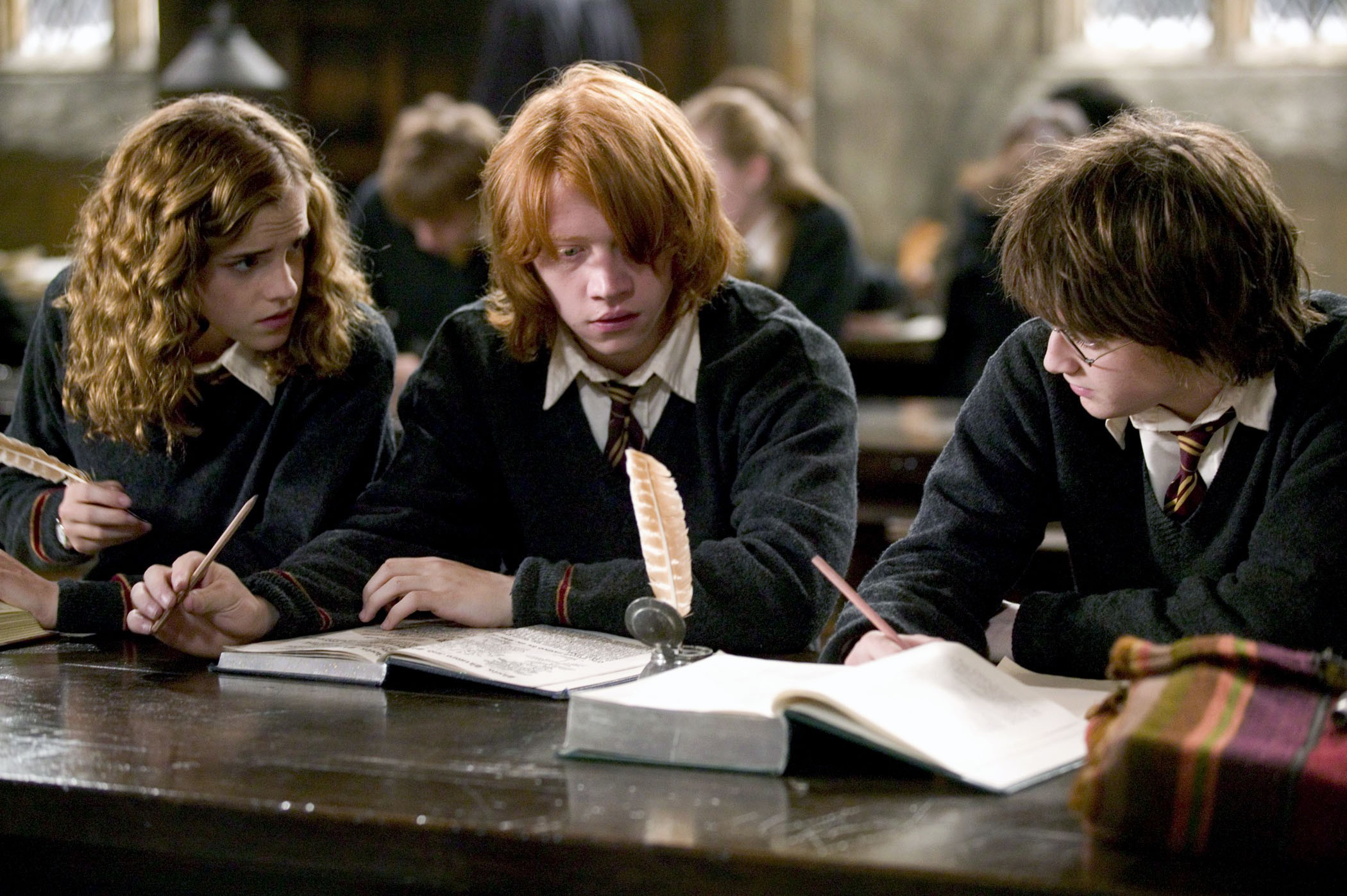
It’s unfortunate the movie version of Goblet of Fire doesn’t fall at the top of the heap when the book version ranks #1 or #2 for many Potter fans. But director Mike Newell made some irksome choices that diverge wildly from the original text, including, notoriously, Dumbledore screaming at Harry, “Did you put your name in the goblet of fire?!?” a line that Dumbledore uttered “calmly” in the book. Worse still, Goblet is at its heart a mystery novel, but the adaptation undercuts the whodunnit at the center of the story—who did put Harry’s name in the Goblet of Fire?—by showing the culprit in the very first scene.
That said, it’s pretty hard to screw up Rowling’s best story. Goblet breaks from the formula of the last three books, centering the action around the Triwizard Tournament instead of the normal events school year. The three terrifying tasks are a joy to behold, and the angst-producing Yule Ball plays host to some of the most fraught—and delicious—teen drama in the series.
The movie also successfully balances the fun of the tournament with the gravity of Cedric’s death, a major turning point in the franchise. A young Robert Pattinson proves his star power in the small but consequential role. And as Cedric’s father mourns over his body, even non-readers realize the story is about to transform from a boarding school romp into a deadly battle between tolerance and prejudice. Plus, Ralph Fiennes’ inaugural performance as He Who Must Not Be Named is appropriately terrifying and wonderful.
Stream on Amazon.
2. Harry Potter and the Order of the Phoenix

The book Order of the Phoenix often gets knocked for its preoccupation with hormonal teenagers’ mood swings. But that’s the brilliance of the story. Our heroes are hormonal teenagers who make bad decisions based on impulse. The book does force readers to spend a lot of time inside Harry’s head when he’s at his most angry. The movie actually spares the audience this unpleasantness. Because of medium, we only see Harry’s external reactions, and Radcliffe smartly chooses to play Harry as defeated and depressed, a decision that engenders sympathy rather than alienating the audience. Harry only shares his darkest fears about something evil burgeoning inside him in intimate scenes with his godfather Sirius, which makes Sirius’ sudden and surprising death at the end of the film all the more painful.
Other things that recommend Order of the Phoenix: Quieter conversations that plumb the characters’ emotional depths; nightmare-inducing performances by two of the series’ best late-game villains, Helena Bonham Carter as Bellatrix and Imelda Staunton as Dolores Umbridge; and no quidditch, a game that was getting deadly boring by the second film. But the best part of this movie is the epic final showdown in the Department of Mysteries between Dumbledore and Voldemort. That battle—the only one we get to see between the two greatest wizards in history—takes plenty of license but does so in the best way possible. The clash of fire and water and transformation of glass into sand encapsulate the power of film adapation.
Stream on Amazon.
1. Harry Potter and the Prisoner of Azkaban

It’s no surprise that Academy Award winner Alfonso Cuarón directed the best of the Harry Potter flicks. Some might call Prisoner of Azkaban more “adult” than the first two movies. And while we’re of the philosophy that anyone can enjoy and appreciate Harry Potter, it’s certainly fair to say that Cuarón made a more atmospheric movie. He clearly has a talent for working with child actors: The director allowed them to style their school uniforms however they liked, adding a realistic and lived-in feeling to the film. His eye for detail also brings Hogwarts truly to life for the first time, from the candles that look like spinal columns floating in Professor Lupin’s classroom to the reimagined Whomping Willow, which marks the passage of time by huffily shaking off its leaves in autumn.
There are a few choices to quibble with: Deciding not to film a flashback scene featuring Harry’s father and his friends prowling the Hogwarts grounds as Animagi (wizards who can transform into animals) was a missed opportunity. And Cuarón may have unwittingly given away Snape’s allegiance when he directed Alan Rickman to throw his arms across Harry and his friends to protect them from a werewolf, an impulsive act of selflessness that seemed uncharacteristic for the snarling professor. And the Time Turners introduce thousands of questions and plot holes. But all those choices serve a final time traveling sequence that, with the giant clock ticking away in the background, is pitch perfect.
Stream on Amazon.
Correction, Nov. 3
The original version of this story misstated when the movies The Golden Compass and Eragon premiered. They debuted after The Sorcerer’s Stone film was released, not before.
Most Popular from TIME
More Must-Reads from TIME
- Cybersecurity Experts Are Sounding the Alarm on DOGE
- Meet the 2025 Women of the Year
- The Harsh Truth About Disability Inclusion
- Why Do More Young Adults Have Cancer?
- Colman Domingo Leads With Radical Love
- How to Get Better at Doing Things Alone
- Michelle Zauner Stares Down the Darkness
Write to Eliana Dockterman at eliana.dockterman@time.com